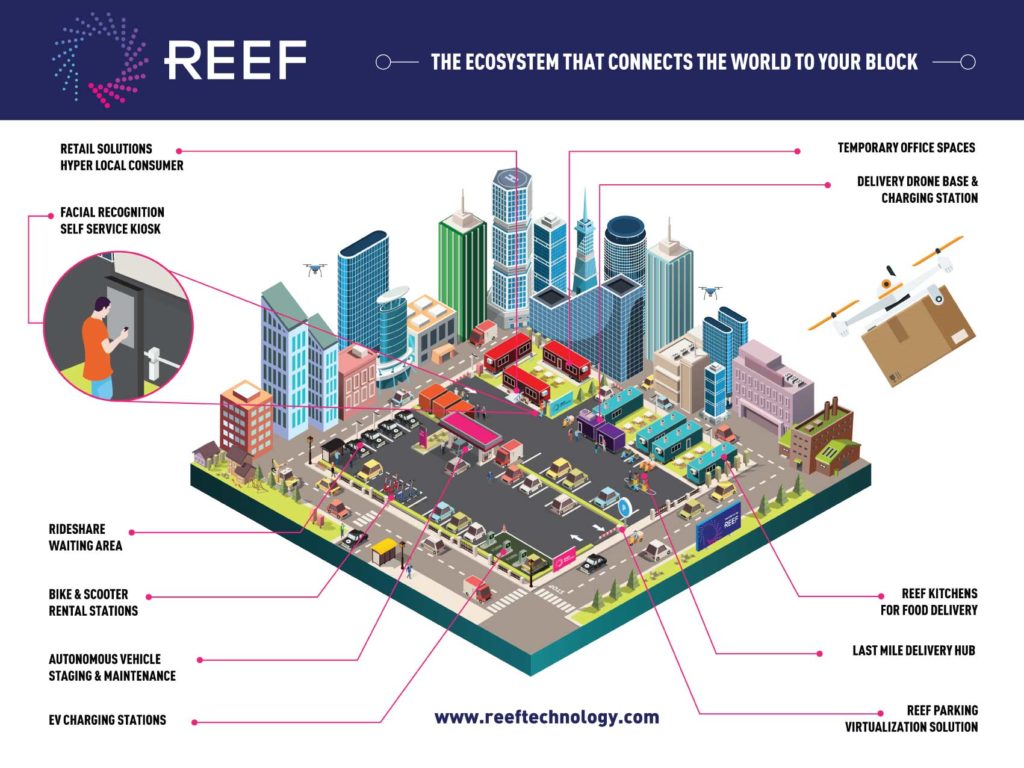Parking facilities have served us well for over a century. Essential components of any transportation system, well-run surface lots and garages have kept local businesses accessible and our neighborhoods livable.
But as our urban centers densify, we increasingly favor the access and availability provided by the shared and on-demand economies. This creates ample opportunity to reimagine the role parking assets play for the good of the communities they serve.
A parking asset’s value is not only rooted in its function as a vehicle storage facility, but also in its proximity to where we live, work, and play. It is this proximity that enables us to develop compelling additional use-cases that turn parking lots into the dynamic focal points of neighborhoods.
One such use case is to create small-scale warehouses, or “micro-distribution centers,” for brick-and-mortar retailers and e-commerce companies navigating the on-demand economy.
Currently, businesses looking to meet growing consumer demand for the light-speed delivery of products and services have two options: put more delivery drivers on our roads or more inventory in our urban centers.
Both strategies are problematic. Delivery trucks are already a substantial strain on our roads and produce disproportionate congestion costs. Even traditional carriers are struggling to contend with city traffic, their trucks routinely occupying valuable curb space and racking up millions of dollars in parking tickets in the process.
Pushing large-scale warehouses into our cores is no better. CBRE reports that 1.25 million square feet of industrial real estate is needed to support $1 billion in e-commerce sales — an industry set to be worth over $4 trillion in 2020. However, space in our downtown cores is limited, and arguably too precious, for city planners to justify the development of large urban warehouses — especially for cities grappling with affordable housing crises and vacancy rates as low as 1%.
Here, parking facilities can provide a solution. Their generous height allowances, load-bearing capacity, and room to maneuver all lend themselves to inventory storage and delivery vehicle throughput. Thus, turning parking assets into micro-distribution centers is a logical, economically defensible use case; one that can be quickly actioned and, importantly, deployed in tandem with traditional parking operations.
The micro-distribution center concept empowers retailers to think hyperlocally, making the adoption of zero-emission transportation methods not only viable, but also more efficient and desirable than delivery trucks. Indeed, e-cargo bikes, traditional push bikes, and even delivery drones can all be stationed within the same parking facility that inventory is stored to the direct benefit of the surrounding community.
It’s a win-win-win scenario: retailers streamline their logistics and reduce their costs, communities receive their goods quicker, and administrations can take delivery trucks — and their emissions — out of the congestion equation.
Of course, the future of parking doesn’t stop at delivery logistics. The on-demand economy has also led communities around the world to place greater value on speed, convenience, and proximity, with access to mobility being no exception. Unfortunately, traditional transportation systems don’t often cater to our “right here, right now” mentality — a possible explanation for why transit use across the United States has dipped while on-demand ride-hailing services like Uber and Lyft have boomed.
As is well documented, ride-hailing services have contributed to the city congestion they sought to alleviate — an issue catalyzed by drivers who cruise while waiting for their next passenger. Here, parking facilities can once again act as a congestion-reduction buffer. With very little operational adjustment, select parking spaces can be converted into designated waiting areas for ride-hailing drivers, taking their cars — and the extra traffic — off our roads and away from our curbs.

As the densification of our urban centers continues, these additional-use cases have made the proximity of parking real estate more valuable than ever before. And while we must continue to carefully manage parking demand, it is time we transform static facilities into dynamic, multimodal hubs — the key to connecting our communities to the businesses and services that keep us all moving forward.
© CoMotion LA │ Powering a Multimodal Future for All